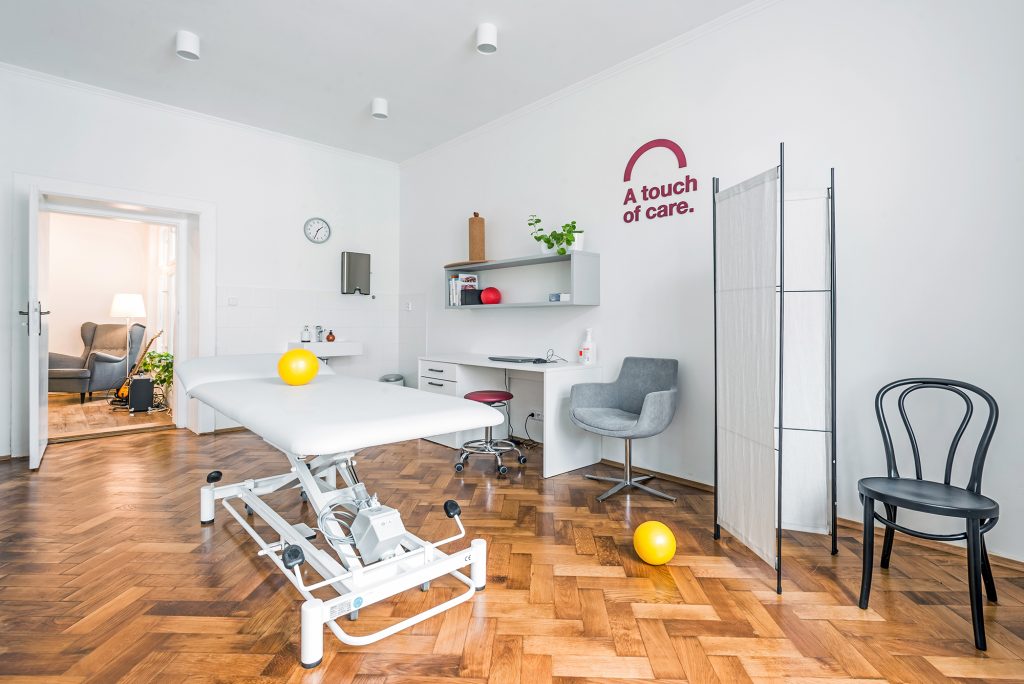Pain Under the Shoulder Blade from Overuse
Pain under the shoulder blade can arise from a wide variety of causes, making it difficult to identify the exact reason. Discomfort in these areas can result from injury, overuse, or pain originating from another part of the body. One common trigger is maintaining static positions for extended periods (e.g., driving, sitting at a computer). It’s essential to recognize that even the best chair or adjustable desk won’t save you from discomfort if you stay in the same position too long. Another example is excessive strain, whether physical or mental. Both types of strain can manifest in the body as muscle tightness, tension, and improper breathing and movement patterns. Problems often escalate when we ignore or tolerate pain. This unconscious behavior alters the body’s overall posture and the way it functions.
The Source of Pain is Often Elsewhere
To illustrate, imagine a client who experiences shoulder pain after playing tennis but doesn’t address it, expecting it to heal on its own. While working at the office, they unconsciously adjust their posture to avoid the pain, which leads to neck stiffness. After a few days, they feel pain in both the shoulder and neck. At night, they struggle to sleep because lying on their side hurts the shoulder, and lying on their stomach aggravates the neck, but they can’t sleep on their back. They wake up feeling sore and notice a sharp pain under the shoulder blade, especially when taking a deep breath. What started as tennis-related shoulder strain has now led to a stiff neck and rib cage blocks with pain under the shoulder blade. This snowball effect continues, and the person may forget that the original issue was the tennis strain. Many of our clients come to us with similar stories. In short, pain under the shoulder blade is often linked to posture, physical activity (not just sports), breathing, mental state, work position, and various other factors. Our job as physiotherapists is to unravel the problem and find a solution.
Risk Factors for Shoulder Blade Pain
Prolonged sitting or standing is often a trigger for these problems. Add to that a poorly designed chair and a computer that is either too high or too low, and pain is bound to follow. Ignoring “small” chronic pains can also lead to additional symptoms over time. Long-term stress without proper coping strategies is just as harmful as excessive physical strain.
How Does Shoulder Blade Pain from Overuse Manifest?
Some typical symptoms may follow rib blockages. For instance, if the first rib and collarbone are blocked, you may experience pain in the crown of your head, forehead, eye, or above the ear. A blocked second rib can cause dizziness. The third rib is associated with tooth pain, tinnitus (ringing in the ears), or tingling in the arm. Blockages of the fourth rib on the left side can mimic heart problems, while breathing difficulties are common on the right side. Before visiting a physiotherapist, it’s wise to rule out heart attacks or pulmonary embolisms in such cases. Pain in these cases is often localized between the shoulder blade and spine or under the shoulder blade. It may feel sharp or dull and can sometimes spread to the neck or chest. Breathing, head movements, and movements of the spine or shoulder may worsen the pain.
Targeted Diagnosis – Finding the Source of Pain
Physiotherapists use detailed kinesiological assessments to diagnose issues. This involves a series of examination techniques where the physiotherapist reviews the client’s medical history. Additional tests may be conducted based on the therapist’s judgment. The result is a diagnosis and a tailored rehabilitation plan. It’s important to focus on finding the root cause of the pain rather than just treating the symptoms. This significantly increases the chances of successful treatment.
Treatment from a Physiotherapist’s Perspective
Physiotherapy involves a variety of treatment and preventive techniques, depending on the specific issues you are experiencing. One of the key aspects of physiotherapy is viewing the body as a whole. Therefore, an essential part of treatment is offering advice and tips you can apply in your daily activities to take care of yourself and reduce the risk of pain or injury. Additionally, our role includes developing a personalized exercise program (specific exercises) that should be regularly practiced for a certain period. Lastly, manual therapy, where the physiotherapist uses their hands to manipulate, mobilize, and release tension in the body, is a critical aspect of treatment.
5 Tips for Dealing with Chest and Shoulder Blade Pain
- Move wisely: Natural movement is often the solution to various problems.
- Stretch and use tools: Incorporate stretching exercises and use massage rollers and balls to release tight muscles.
- Optimize your workspace: Set up your work and relaxation spaces as ergonomically as possible according to your body’s needs.
- Identify triggers: Try to recognize what triggers your pain.
- Don’t ignore chronic pain: Seek help if the pain persists. If you suspect heart issues, consult your doctor.







